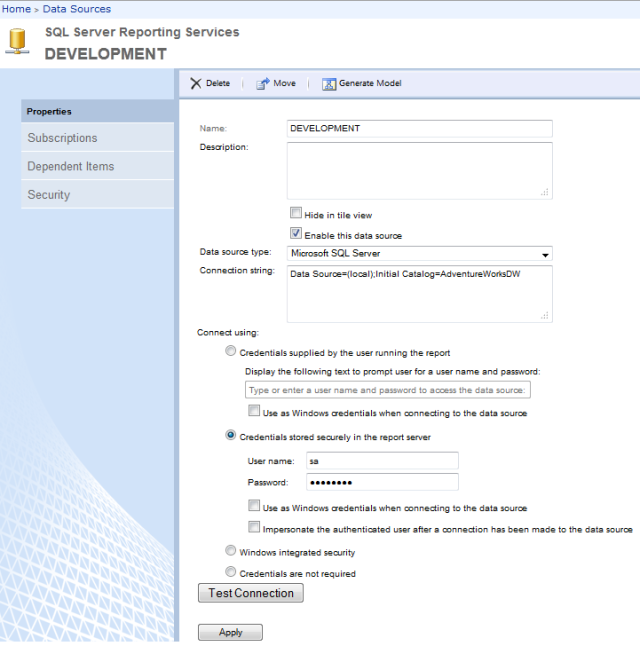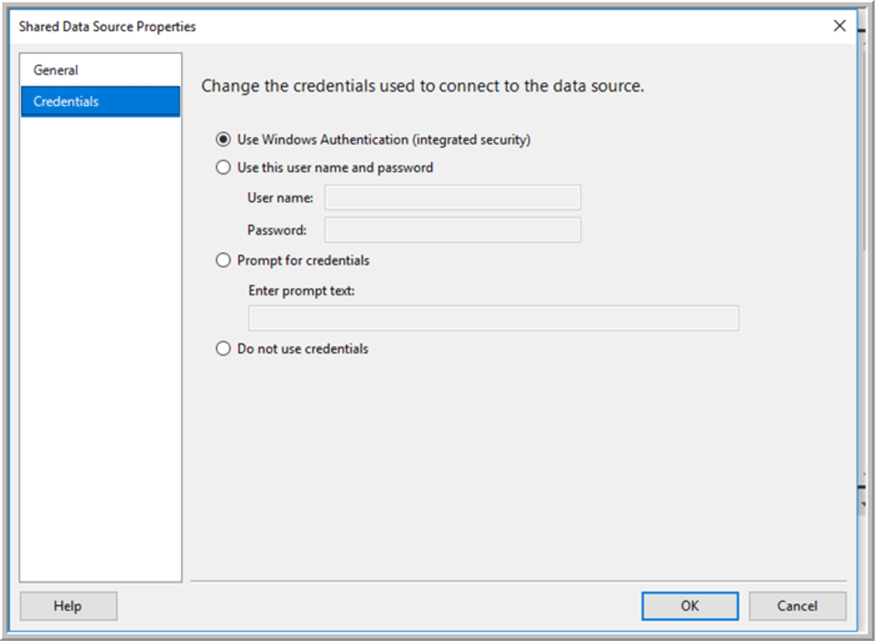
- #Sql server connection string data source vs server how to#
- #Sql server connection string data source vs server install#
- #Sql server connection string data source vs server drivers#
- #Sql server connection string data source vs server driver#
The New Linked Server dialog is displayed. In the Server Objects node, right-click Linked Servers and click New Linked Server.

Create a Linked Server for the ODBC Data SourceĪfter you have configured and started the TDS remoting service, create the linked server and connect. The service can be configured in the UI for the SQL Gateway: See the setup guide in the SQL Gateway overview. The SQL Gateway runs a service that listens for requests from clients in SQL Server's TDS protocol. Want to know why you should use TDS remoting to create a linked server? Learn more. You can then work with your ODBC data source just as you would a linked SQL Server instance. Either use the UI in SQL Server Management Studio or call stored procedures to create the linked server.
#Sql server connection string data source vs server drivers#
If set to true, string parameters are sent to Microsoft SQL Server in Unicode.You can use the TDS Remoting feature of the SQL Gateway to set up a linked server for any ODBC data source (including the 90+ ODBC drivers by CData). Determines whether string parameters are sent to the Microsoft SQL Server database in Unicode or in the default character encoding of the database. Table 5-1 SQL Server Connection Properties For example, Password is the same as password. Note: All connection string property names are case-insensitive. To specify a property, use the following form in the JDBC data source configuration: property=value You can use these connection properties in a JDBC data source configuration in your WebLogic Server domain. Table 5-1 lists the JDBC connection properties supported by the SQL Server driver, and describes each property. Instance_name is the name of the instance to which you want to connect on the server.įor example, the following connection URL connects to an instance named instance1 on server1: jdbc:bea:sqlserver://server1\\instance1 User=test Pasword=secret Server_name is the IP address or hostname of the server. Note: The first back slash character ( \) in \\ instance_name is an escape character. To connect to a named instance using a connection URL, use the following URL format: jdbc:bea:sqlserver:// server_name\\ instance_name An instance is identified by an instance name. Microsoft SQL Server supports multiple instances of a SQL Server database running concurrently on the same server. To connect to a Microsoft SQL Server database, use the following URL format: jdbc:bea:sqlserver:// dbserver : port
#Sql server connection string data source vs server driver#
The driver classes for the BEA WebLogic Type 4 JDBC MS SQL Server driver are: See Installing Stored Procedures for JTA for details.

#Sql server connection string data source vs server install#
To use JDBC distributed transactions through JTA, you must install stored procedures for SQL Server.

BEA recommends that you use the new BEA WebLogic Type 4 JDBC MS SQL Server driver in place of the WebLogic jDriver for Microsoft SQL Server. The new driver offers JDBC 3.0 compliance, support for some JDBC 2.0 extensions, and better performance. Note: The BEA WebLogic Type 4 JDBC MS SQL Server driver (the subject of this chapter) replaces the WebLogic jDriver for Microsoft SQL Server, which is deprecated.
#Sql server connection string data source vs server how to#
The following sections describe how to configure and use the BEA WebLogic Type 4 JDBC SQL Server driver:


 0 kommentar(er)
0 kommentar(er)
